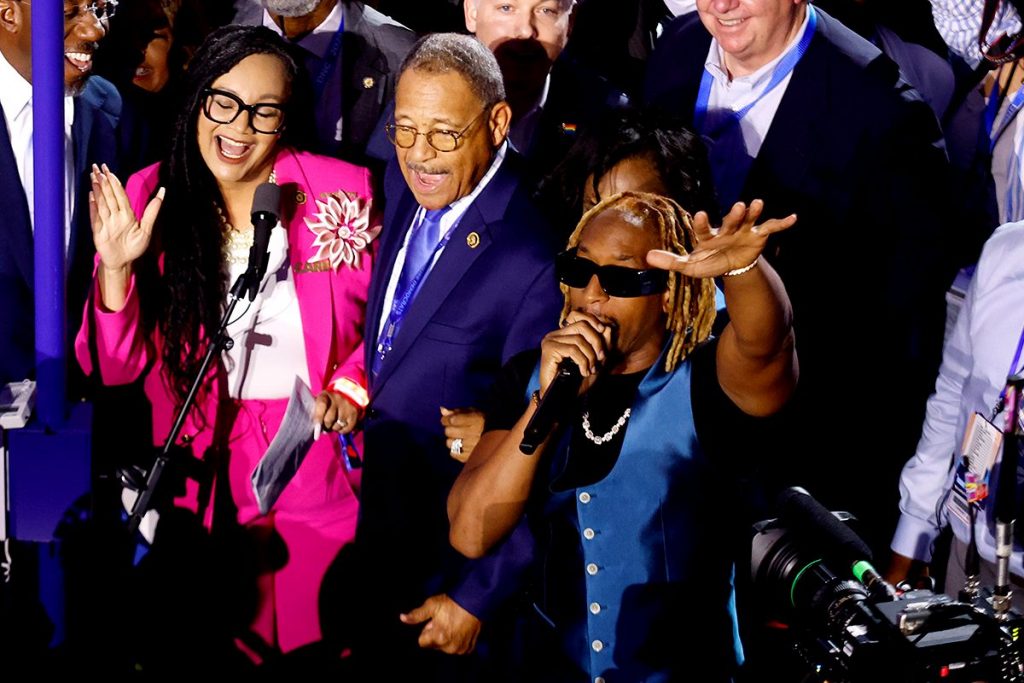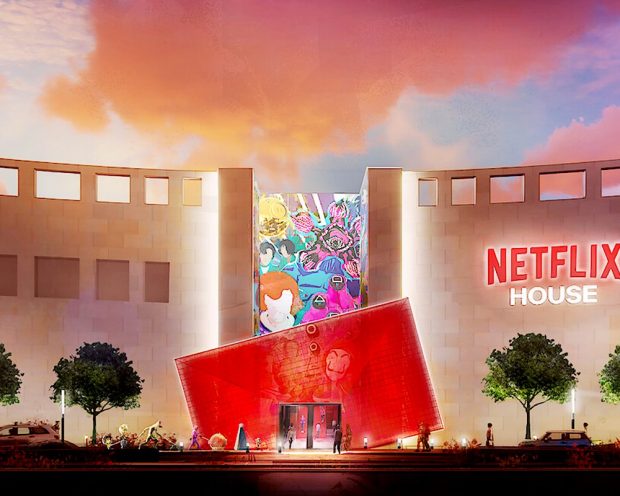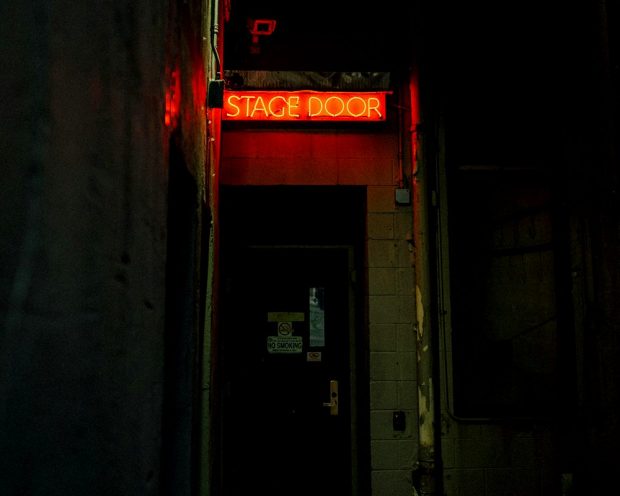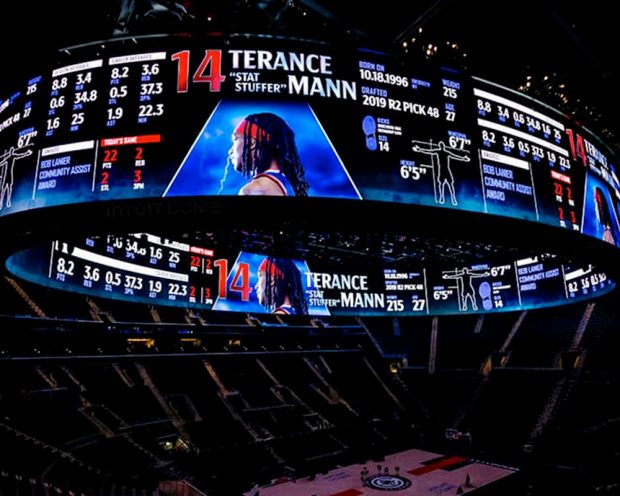The Hybrid Dilemma: When Live Experiences Are Tailored for TV

In today’s digital-first world, live streaming has completely changed how we experience huge cultural events. It’s okay if you can’t fork over $500-$11,000 for Coachella tickets or fly to Paris for the Olympics during peak summer airline pricing because now, everyone with an internet connection can participate. Although awards ceremonies like the Oscars and Grammys are the OG hybrid events, this summer’s spate of experiences had us asking a few questions — which should come first, the live audience or the live stream? And what happens when live events are made more for TV or streaming audiences than for the people actually there?
Event producers face a tricky task when creating experiences that work for IRL and remote audiences. While live streaming makes events more accessible, it can often diminish the special, in-the-moment feeling that makes being there in person so magical. The challenge is finding a way to make both groups feel connected and engaged.
As we’ve seen with recent, massive cultural moments like Coachella, the Paris Olympics Opening Ceremony, and the Democratic National Convention, balancing the needs of both audiences requires careful planning and creativity.
Coachella 2024 acts played to the cameras
Since 2011, Coachella has been ahead of the curve by live-streaming select performances, giving fans worldwide a chance to join in on the desert fun from their air-conditioned living rooms, aka Couchella. This year, Coachella rolled out some cool new features for YouTube, such as a multi-view option to watch up to four performances simultaneously. Each major stage had its own live stream, designed to give online viewers a taste of what it’s like to bounce between stages at the actual festival.
The stream has helped the festival reach more people — in 2023, headliner BLACKPINK drew 2.96 million YouTube viewers — but it’s also altered the vibe for those attending in person. 2024 performers like Bebe Rexha and Gwen Stefani seemed more focused on playing to the cameras than interacting with the live audience, making some festival-goers feel like they were just extras in a show designed for those watching at home.
Courtesy r/Coachella
Jack Antonoff from Bleachers found a sweet spot by shouting out the folks watching from home before saying, “But this is about the people who are here.” (Maybe that’s because Taylor Swift and Travis Kelce were in the crowd.) It’s a delicate balance, but artists must find a way to connect with both audiences.
Paris Olympics Opening Ceremony put the city second
The Paris 2024 Olympics Opening Ceremony was a stunning display of how to blend history with modern flair. And a prime example of what can happen when an event is designed for a global TV audience first. The ceremony, directed by Thomas Jolly, took viewers on a journey through Paris’s most iconic landmarks, mixing in cutting-edge tech and fresh performances. It was a beautiful showcase of what makes Paris a simultaneously timeless and modern city.
But while the ceremony looked incredible on screen, it didn’t quite hit the mark for those piled along the Seine in the pouring rain. Throughout the day, residents faced higher metro prices, station closures and restricted access to parts of the city, leading to frustration and outrage. For spectators who made it to their designated spots along the Seine, the river parade of athletes turned into a virtual experience for 25 minutes as they watched the first boats — and Lady Gaga — on giant screens while staring at an empty river. Despite the excitement of the Games, the inconvenience and lackluster live experience for many was hard to ignore.
Lauren Austin, Chief Creative Officer at MKG, appreciated the creativity and the use of the city and the river as a stage, but she also noted that the format might have tried to do too much. “It’s a challenging format, and every time I watch it, I think it runs about two hours too long,” she said. “There were parts I liked more than others, like that incredible horse riding down the river. And it was refreshing to see them shake up the traditional format, which usually feels repetitive — always in a stadium with slight cultural tweaks.”
2024 DNC worked to focus on voters at home
The balancing act between live and remote audiences was also on full display at the 2024 Democratic National Convention (DNC). Produced by Ricky Kirshner, famous for his work on the Super Bowl, the convention featured powerful speeches and a dance party roll call, all designed to bring the room’s positive vibes and high energy to viewers at home.
However, as political commentator Tommy Vietor pointed out on Pod Save America, the experience of watching the DNC at home versus being in the hall was pretty different. “People in the room said that you could barely hear Hillary Clinton during her speech because the applause was so loud, but it just didn’t come through on TV,” he said. His cohost Jon Favreau added, “People [in the hall] start applauding, but you have to keep going because your audience is the people at home, not the people in the room.”
Despite these challenges, the DNC mostly succeeded in catering to the delegates and guests while also making the home audience feel part of the action. The ratings were high, and the fun, upbeat atmosphere, even on TV, came through.
The key is to understand what both audiences need and to create experiences that make everyone feel connected. Consider:
- Turn your live audience into part of the storyline: The DNC wasn’t perfect, but got many things right when it came to energizing the audience in the room and the viewers at home. As the camera panned to the attendees inside the convention hall, the joy and excitement was palpable. Don’t try and pretend that your live audience isn’t in the room – their presence can be a plus.
- Making the experience more interactive: Why not create ways for both live and remote audiences to connect? Think about live polls, shared moments broadcast on big screens or special areas onsite where attendees can interact with folks watching from home. This way, everyone feels like they’re part of the action, no matter where they are.
- Setting up free (or low-cost) watch parties: These can be hosted near the main event as a fun way to let more people join in on the excitement without breaking the bank. Plus, they create a sense of community outside the stadium, arena, or festival grounds.
As we look ahead to the next few months (and years!), we’re keeping a close eye on some major hybrid events in the US — with a global audience to boot. The Macy’s Thanksgiving Day Parade is always a fan favorite, with around 3.5 million spectators in person in New York City and 20-25 million viewers who watch the event on TV. The 2026 FIFA World Cup will be held across the US, Canada and Mexico with roughly seven million tickets expected to be available across 16 stadiums. And, of course, the 2028 Summer Olympics are headed to LA with promises to change the Olympics hosting model for the better.
Join us in XP Land. A community for experiential creatives and experience-makers, brand leaders and IP-owners, space stewards and venue visionaries — all of those in the business of epic gatherings and live, immersive storytelling.


